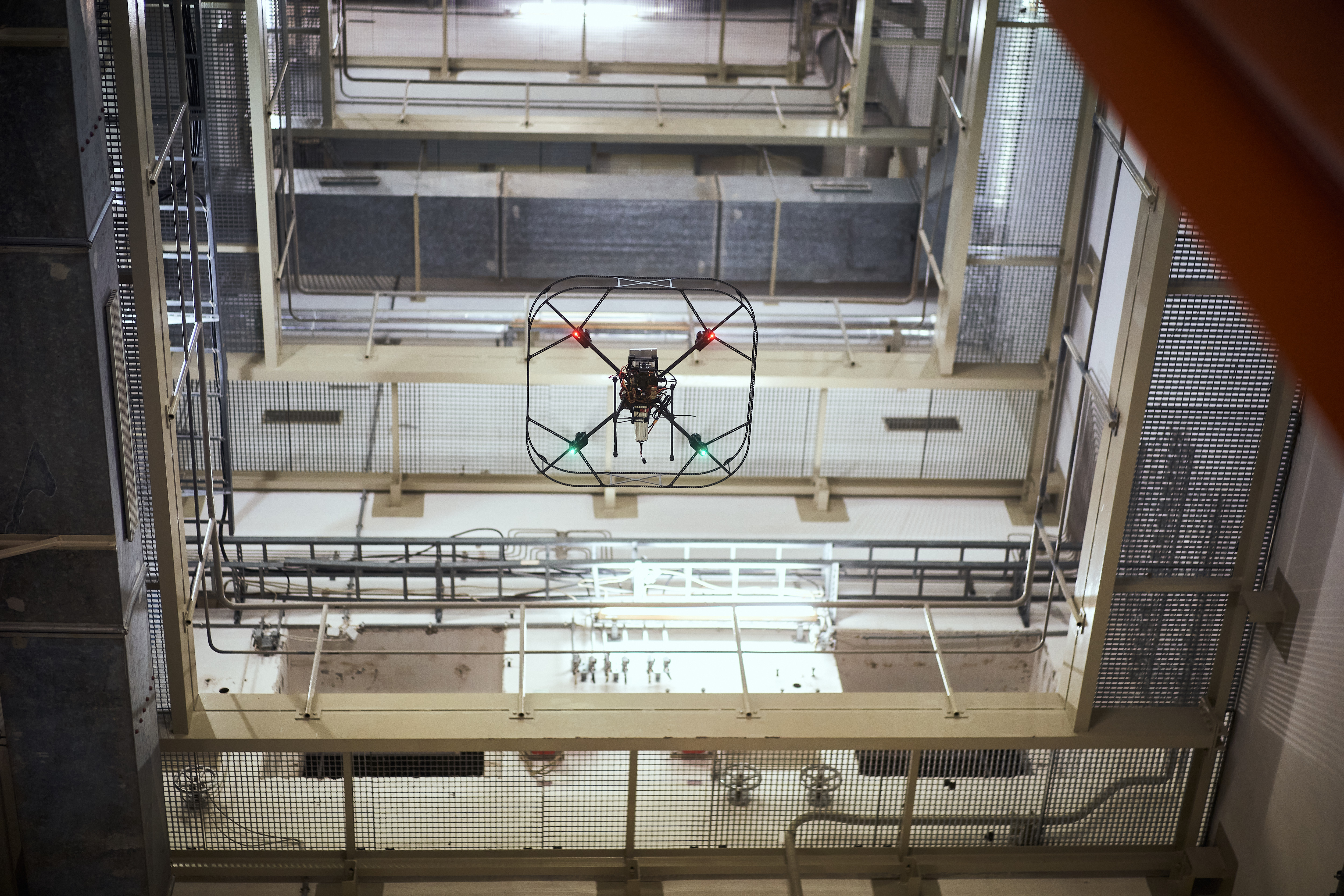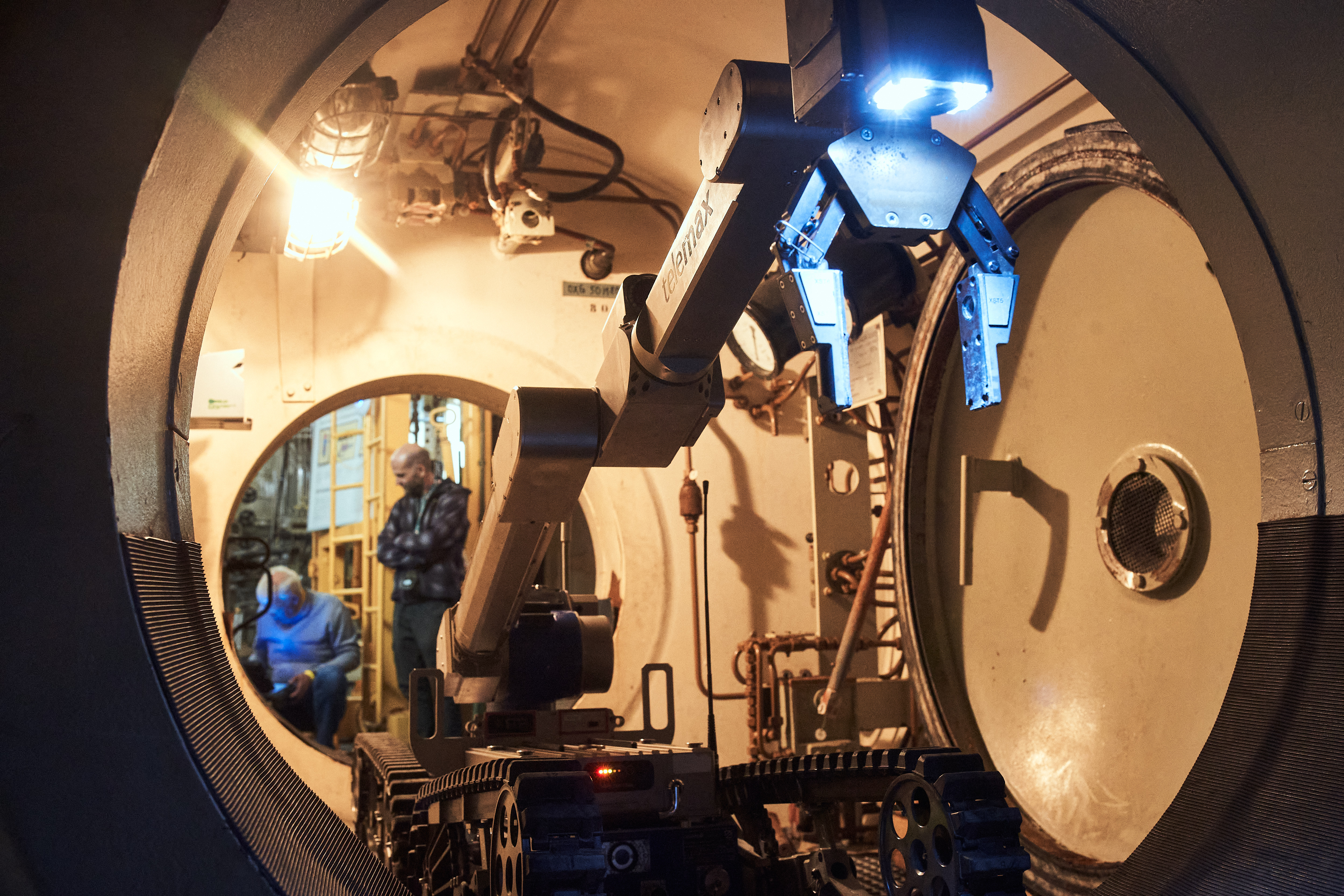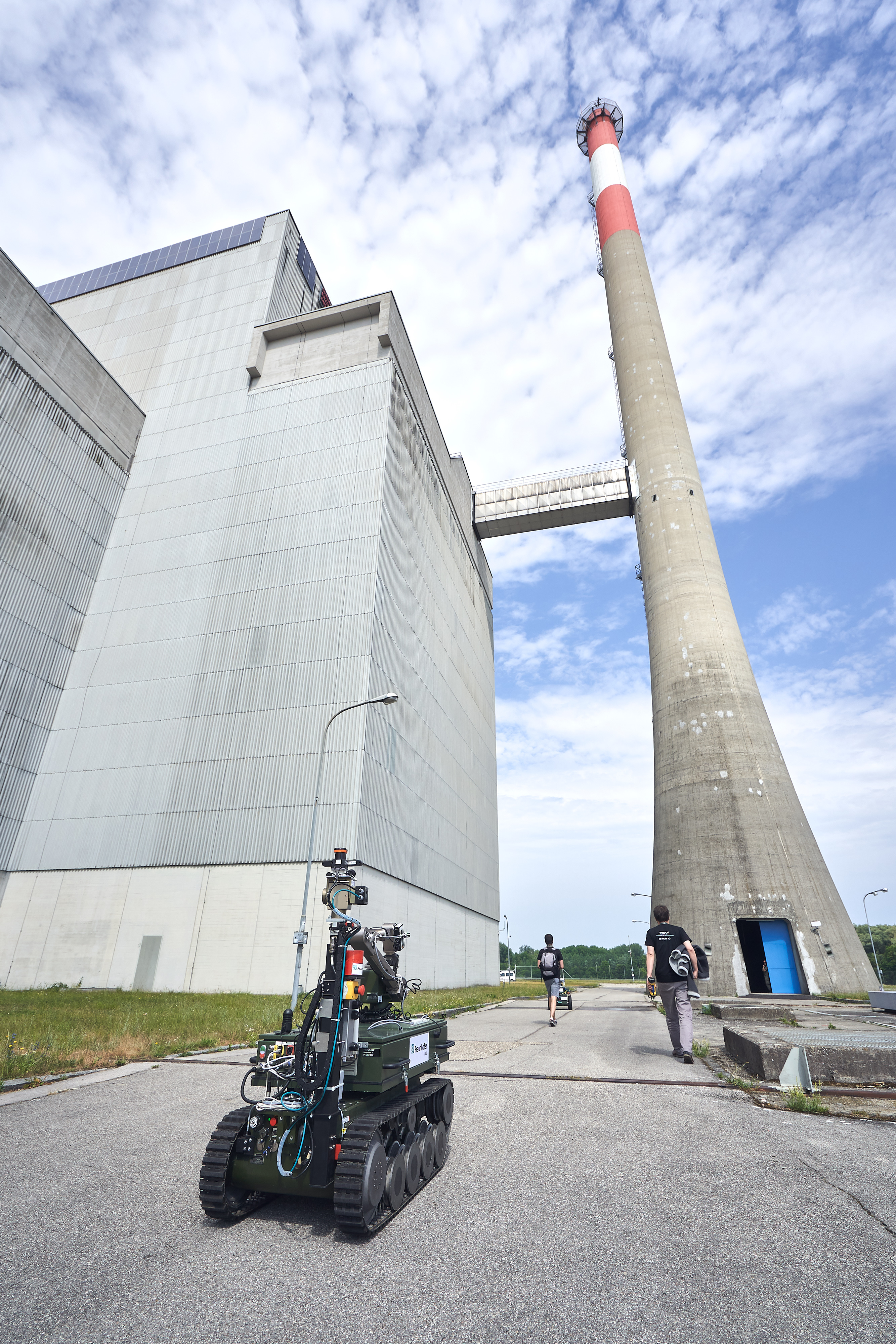EnRicH 2025: Robots and drones simulate an emergency scenario at a nuclear power plant
Preparations have been underway since September with the first teams having already registered: In early July 2025, robotics experts from all over the world will come together for the 5th time at the European Robotics Hackathon (EnRicH) near Vienna. At the Zwentendorf Nuclear Power Plant (NPP), a site that has never been in operation, they will spend a week testing their robotic systems under the most difficult conditions – and simulating emergency scenarios under real world conditions. A team from the Fraunhofer Institute for Communication, Information Processing and Ergonomics FKIE designed and developed the tasks once again in close cooperation with the Austrian Armaments and Defence Technology Agency (ARWT).



If you look up about 15 metres to the ceiling in the shaft, you will notice countless steel struts. Narrow gratings with waist-high railings on several levels lead to the other parts of the nuclear power plant. Pipes and cables run along the metre-thick concrete walls and numerous valves protrude from the wall. The conditions for flying UAVs (unmanned aerial vehicles) are far from ideal, yet this is precisely what EnRicH 2025 has set out to do. "For the first time, there will be a combined scenario for flying and driving systems over the coming year," reveals EnRicH organiser Dr Frank E. Schneider, Deputy Head of the "Cognitive Mobile Systems" department at Fraunhofer FKIE. He also emphasises: "We strongly encourage all participants to take advantage of the UAV/UGV cooperation."
This major event has been held every two years since 2017
In 2017, Dr. Schneider and his team organised the first Hackathon in Zwentendorf, and the major event has been held every two years since then. It is not just the venue, which is probably the only one of its kind in the world, that makes the event so special. While the commissioning of the Zwentendorf NPP was suspended following a referendum in 1978, it is almost identical in construction to the nuclear power plant in Fukushima, where one of the biggest reactor disasters occurred in 2011. Almost complete darkness in the building, sharp corners, narrow rooms, steep stairs, self-closing doors and limited or no communication facilities are part of the real-world baseline conditions for all EnRicH teams.
Another highlight of the hackathon will be working with real radiation sources provided by ARWT, the host and co-organiser. "In 2025, participants will have to carry out a full hazardous materials operation, including searching for and possibly handling radioactive material and mapping difficult environments," says Schneider. For him, this task couldn't be more relevant, as many operations are too dangerous for people to be involved in, due to the high levels of radiation from hazardous incidents and the decommissioning or dismantling of old nuclear facilities. "Specialised robotic systems need to be developed for these radiological and nuclear scenarios," says Schneider. "However, while the demand for such solutions is high, there is no sign of any systems ready for the market in the near future. This is why one of the aims of EnRicH is to promote the use of robotic solutions in this field as well."
Teams will compete in three categories
In 2025, teams will compete in three different categories and can complete any combination of tasks. The "Mapping" category, for example, includes two exploration tasks where radiation must be detected, measured and marked on a digital map, while a digital 3D map of the area must also be produced. The "Manipulation" category is also made up of two sub-tasks. The teams have to use their robotic system to identify a pipe with radioactive coolant and then close the corresponding valve.
Finally, in the "Search and Rescue" category, dummies of injured workers are spread throughout the building. These have to be found, their positions must be marked on the map, and, if possible, they have to be moved to a safe area. However, detecting and measuring radiation is mandatory for all participating teams. Another new scenario at EnRicH focuses on AI-based assistance functions for bomb disposal. "At EnRicH 2025, the robotic systems move across several levels and an area of around 5,000 square metres," explains Schneider. "The routes are therefore much further and the tasks more complex. We are excited to see how well the systems can perform under such conditions."
The Agentur für Innovation in Cybersicherheit GmbH (Agency for Innovation in Cybersecurity) will participate for the first time in 2025 and will evaluate the submissions with the aim of assessing potentially disruptive innovations for this particularly security-relevant field. All of the submissions will be judged by an external jury, including Dr Michael Gustmann, Kenneth Pink and Professor Daniel Watzenig, all of whom are proven experts in robotics and nuclear technology. Nevertheless, Schneider makes one thing clear: "At EnRicH, it's not about competing. Rather, it gives users the opportunity to test the performance of robotic systems in current, real-world scenarios."
The 5th European Robotics Hackathon
EnRicH 2025
Zwentendorf Nuclear Power Plant, Austria
30 June - 4 July 2025
Registration deadline for teams: 28 February 2025
Information: https://enrich.european-robotics.eu
Further information & images:
https://www.fkie.fraunhofer.de/enrich
Contact:
Dr. Frank E. Schneider, "Cognitive Mobile Systems" department
Fraunhofer Institute for Communication, Information Processing and Ergonomics FKIE
frank.schneider@fkie.fraunhofer.de I Telephone: +49 228 9435481
